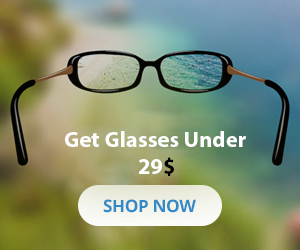Glare can be risky while you are driving at full speed. Low sun view is excellent, but reflecting light from horizontal surfaces like snow, car bonnets, and sand can be risky for the eyes.
But this glare is the cause of many accidents on the road, and the right pair of eyes as Wiley X Ace can prevent you from this.
But first of all, you have to clear up the idea of what kind of sunglasses you need. Read out some laws that they say about sunglasses while driving on the road.
Clear Vision
For lenses, there are two essential requirements while driving.
- Your vision should be clear.
- Appropriate light should enter into your eyes.
- Sunglasses with dark lenses can be taken while driving.
- Fashionable frames can block peripheral vision if they do have not an appropriate style.
Shades are necessary therefore, choose carefully when driving. Many lenses are perfect for driving but follow two main categories comfortable fit with certain shades.
Variable Lenses Tints:
Photochromic lenses fall in this category, and they change their shades according to light density. When they get a high amount of light, they change their shades and become dark. So, brighter light will turn the lenses into dark shades.
But these lenses are not suitable for driving because they cannot block UV rays because of a car windshield. All car windshield has UV protection, so the lenses don’t change their color inside the car.
Therefore, you will find the lenses will be light inside the car and won’t turn into a dark shade. You need to choose the lenses that are designed to react to both visible and UV rays.
So, you should select lenses that can adapt to all varying light conditions while driving. But in this situation, your optician can guide you with the right choice.
Fixed Lenses Tints:
The lenses that have fixed shades don’t change their colors in all weather conditions whether it is dark or light. Fixed-lens sunglasses like Wiley X Ace are easy to find and fix because you can find them for your prescription lenses.
Polarized lenses are an excellent choice for driving. However, fixed shade lenses help to reduce glare because they are designed for this purpose. They are effective in bright light or on a wet road as well.
Lens Tints Density:
All lens tints are not the same because different colors have different characteristics. So, you need to choose the shades that are suitable while driving on the road.
- The tinted lens has to grade with the tint’s density.
- Sunglasses should have a filter facility and a label with the number category over it.
- Lenses that have less than 75% of light transmission are not suitable for driving.
- The yellow tint is advisable while nighttime driving.
- For car light level, you need two kinds of lenses category, and it should be between 18% to 43% for daytime driving.
- The lenses that have light transmit between 3% to 8%, but that is not perfect for any time driving.
Graduate Lenses:
Some drivers prefer graduated lenses in which the top part of the lens is dark, and when you see out you look dark outside. The bottom part of graduated lenses is light, and that makes it easy to see inside cars.
But great quality sunglasses are recommended with anti-glare coating for a clear view. The anti-scratch coating makes the eyewear hard and resistant to scratches.
The sunglasses that have deep arms can stop to see from the side of your peripheral vision. Therefore, these lenses are not suggested to wear while driving at night.



